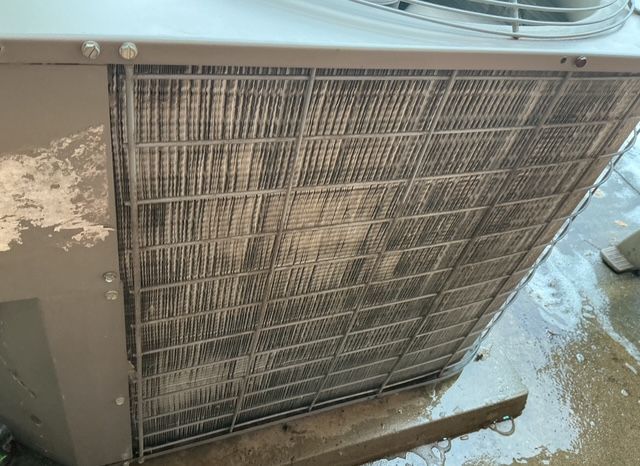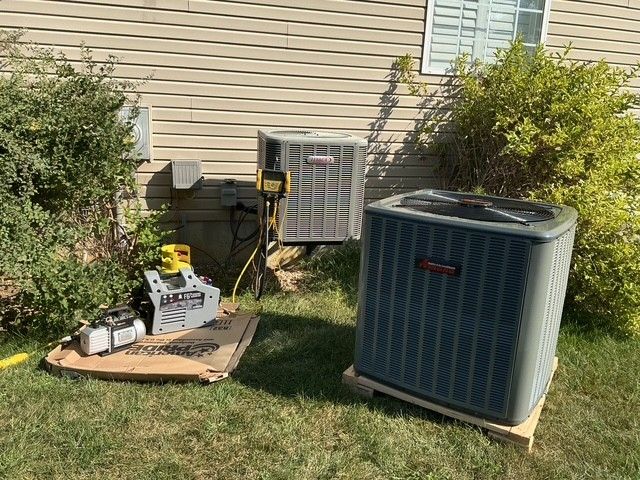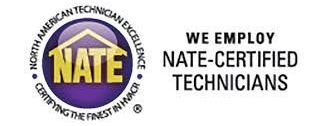Don’t Let Hail Damage Cost You Thousands in Energy Loss
Why Fin Combing Isn’t Enough, &
What Homeowners Need to Know About Hail-Damaged AC Units

Don’t Let Hail Damage Cost You Thousands in Energy Loss
True Blue Home Services
Serving St. Charles County & St. Louis County, MO
Recent hailstorms have caused serious AC damage, leading to higher energy bills and reduced cooling performance. Insurance companies often offer cosmetic fixes like fin combing, which may leave hidden, long-term damage.
How Hail Damages Your AC
Your AC removes heat using aluminum fins bonded to copper tubing, like a car radiator. When hail hits, these fins bend or crush, reducing airflow and efficiency. Once damaged, fins cannot be fully restored.
Insurance Wants to “Comb Out” Your AC Fins
Fin combing is a common insurance fix, but it’s often insufficient for anything beyond minor damage.
What Combing Can and Can’t Do
- Minor damage: Fin comb may restore airflow.
- Moderate damage: Requires condenser coil replacement.
- Major damage: May require full unit replacement.
Why Comb-Out Repairs Often Fail
- Reduced efficiency: Bent fins restrict airflow → higher energy costs.
- Increased wear: Overworked compressor → shorter lifespan.
- Further damage: Poor heat exchange → overheating, frozen coils, or system failure.
💡 Pro Tip: Even if your AC still “cools,” hidden damage can cost hundreds in wasted energy and repairs.
How Bent Fins Affect Airflow
- Straight fins: Smooth airflow → max heat transfer.
- Bent fins: Block airflow → reduced cooling capacity.
Consequences
- Trapped heat → higher refrigerant pressure
- System strain → overheating
- Frozen evaporator coil → shutdown or compressor failure
Drawbacks of Accepting a Fin Combing Repair
- Higher energy bills
- Decreased system lifespan
- Cosmetic-only repair
- Warranty risk
- Hidden internal damage
💡 Pro Tip: Always request a written assessment and photos before accepting any repair.
Other Hail Damage to Your AC
- Condenser coil & refrigerant lines: Leaks, weakened tubing
- Fan & motor: Bent blades, motor strain
- Electrical components: Shorts, corrosion, surge damage
- Cabinet & seals: Dents, rust, water ingress
💡 Pro Tip: Damage may extend beyond visible fins, so get a professional inspection.
Signs Damage Is Too Extensive for a Comb-Out
- Operational issues: Reduced cooling, longer cycles, ice buildup
- Visible signs: Extensive fin damage, dents in tubing, leaks, corrosion
Long-Term Risks of Running a Damaged AC
- Mechanical failures: Compressor, motor, capacitor issues
- Decreased efficiency: Higher bills, uneven temperatures
- Other problems: Frequent repairs, refrigerant leaks
💡 Pro Tip: Proper coil or unit replacement prevents far higher long-term costs.
How to Work With Your Insurance Company
- Hire a licensed HVAC technician
- Document damage with photos & videos
- Get a performance report (airflow, cycles, overheating)
- Demand full restoration to pre-loss condition
Why Proper Replacement Matters
Since 2007, AC units must meet 13 SEER efficiency. Older 8–10 SEER units may need full replacement.
Benefits of Proper Replacement
- Restores efficiency
- Reduces energy bills
- Prevents repeated repairs
Risks of Not Replacing
- Higher energy bills
- Reduced cooling
- System failure
Frequently Asked Questions (FAQ)
Q: Can a simple fin comb fix my AC after hail damage?
A: Only if the damage is minor. Moderate or severe damage requires coil or full unit replacement to restore efficiency and prevent
long-term issues.
Q: How do I know if my AC needs a replacement after a hailstorm?
A: Look for reduced cooling, longer cycles, frequent cycling, ice buildup, bent fins across multiple rows, copper tubing dents, refrigerant leaks, or corrosion. A licensed HVAC technician can confirm the extent.
Q: Will my insurance cover a full replacement?
A: If hail damage prevents your AC from operating as it did before the storm, most homeowner policies cover full coil or unit replacement. Always document damage and submit a professional assessment.
Q: What happens if I accept a comb-out instead of replacement?
A: Your AC may have reduced efficiency, higher energy bills, uneven cooling, overworked components, and a shorter system lifespan. Hidden damage can cause future costly failures.
Q: How can I protect my investment?
A: Insist on restoration to pre-loss condition, hire a licensed HVAC technician for inspection, document all damage, and work with your insurance company to ensure proper replacement of damaged components.
Q: Why is replacement better than repair for older AC units?
A: Older 8–10 SEER units may need to be replaced with modern 13 SEER systems. Replacement ensures efficiency, reliability, and compliance with current standards.
Call True Blue Home Services
If your AC has hail damage in St. Charles County or St. Louis County, don’t settle for less.
📞 Call 636-459-4528 Today!
True Blue Home Services ensures your system is repaired or replaced properly, giving you efficiency, comfort, and long-term protection.



